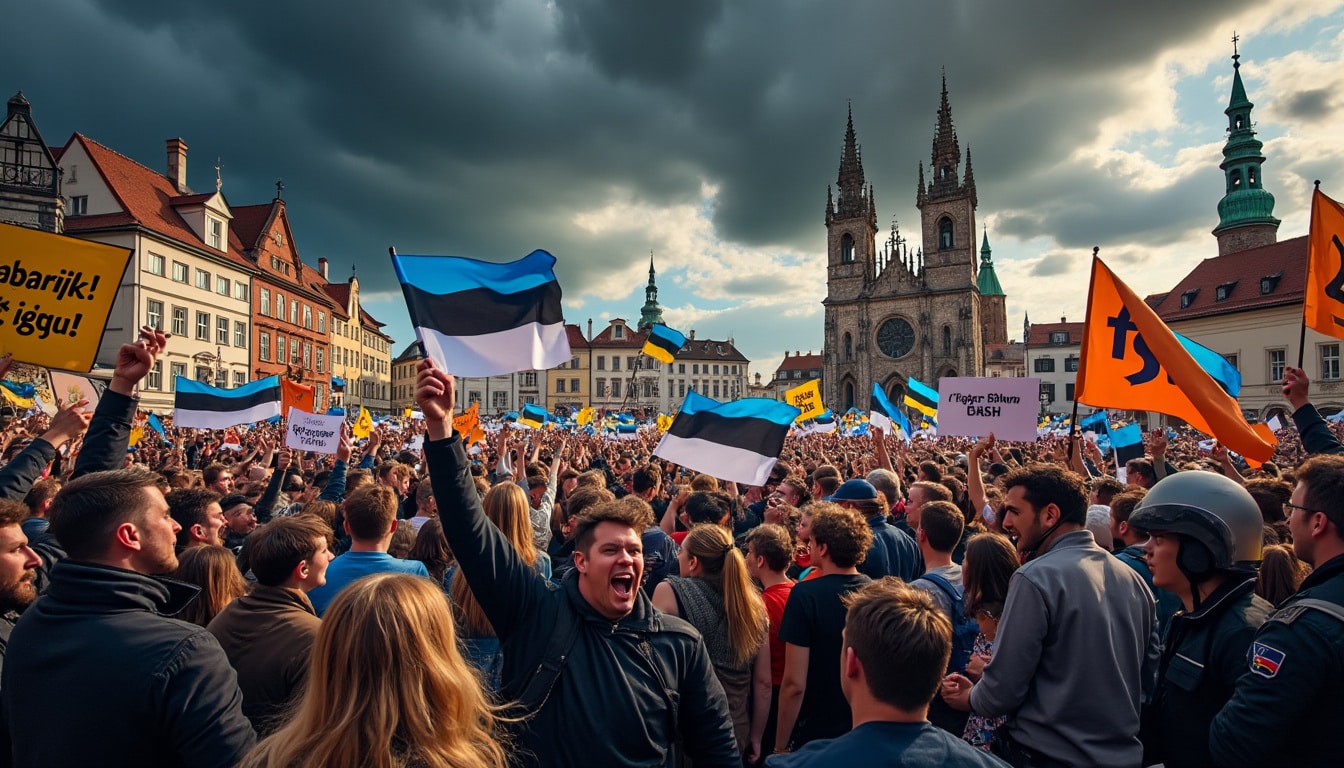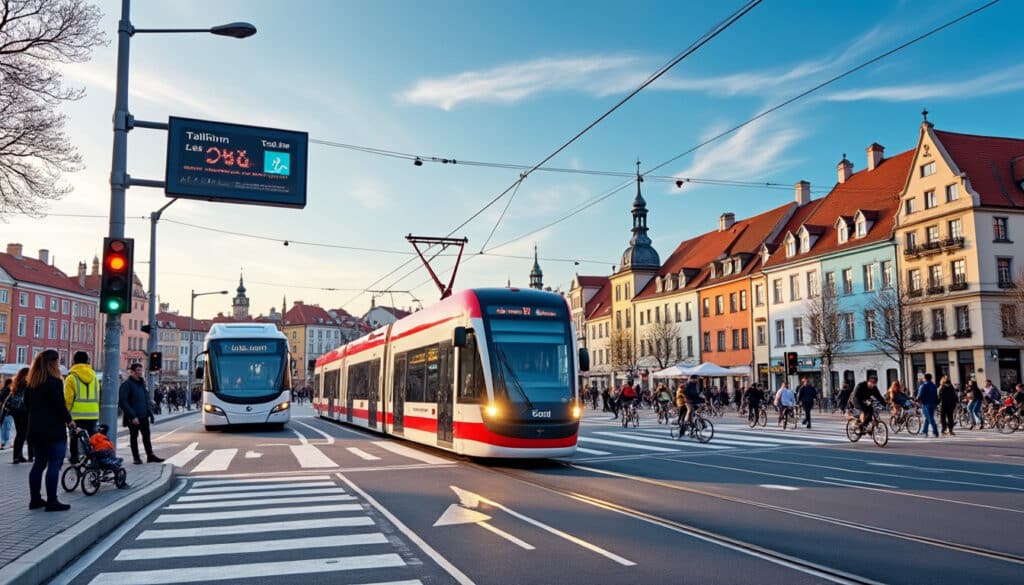The capital city of Estonia, Tallinn, has long been a focal point for social movements and protests. From its cobbled streets to its modern skyscrapers, Tallinn has seen a variety of unrest that echoes throughout history. Understanding the roots and developments of these movements offers a unique glimpse into the socio-political climate not just of Estonia, but also the broader Baltic region. Whether it’s the echo of the Bronze Night or the solidarity with international causes, protests in Tallinn tell a tale of resistance, identity, and change.
The Legacy of the Bronze Night: A Catalyst for Social Unrest
Back in April 2007, Tallinn witnessed what is known as the Bronze Night, a series of riots and protests centered around the relocation of the Bronze Soldier monument. Officially called the April Unrest, this event marked a significant moment in Tallinn’s recent history, highlighting ethnic tensions between the Estonian populace and the large Russian-speaking minority.
The Bronze Soldier, originally a monument to Soviet soldiers who fell in World War II, became a lightning rod for unrest due to its dual symbolic meanings. For ethnic Estonians, it was a reminder of Soviet occupation and suppression. Conversely, for the Russian-speaking community, it symbolized victory over Nazi Germany and their place in Estonian society.
Following the Estonian government’s decision to relocate the statue, nights of rioting erupted. These riots, marked by looting and clashes with the police, were the worst Estonia had seen since its independence from the Soviet Union in 1991. The government’s emergency meeting in the early hours of April 27 led to the immediate relocation of the statue due to security concerns, further escalating tensions.
During these protests, one young ethnic Russian was fatally stabbed, drawing international attention to the severity of the unrest. The statue was eventually relocated to the Defence Forces Cemetery of Tallinn, with a re-opening ceremony held on May 8, coinciding with Victory in Europe (VE) Day.
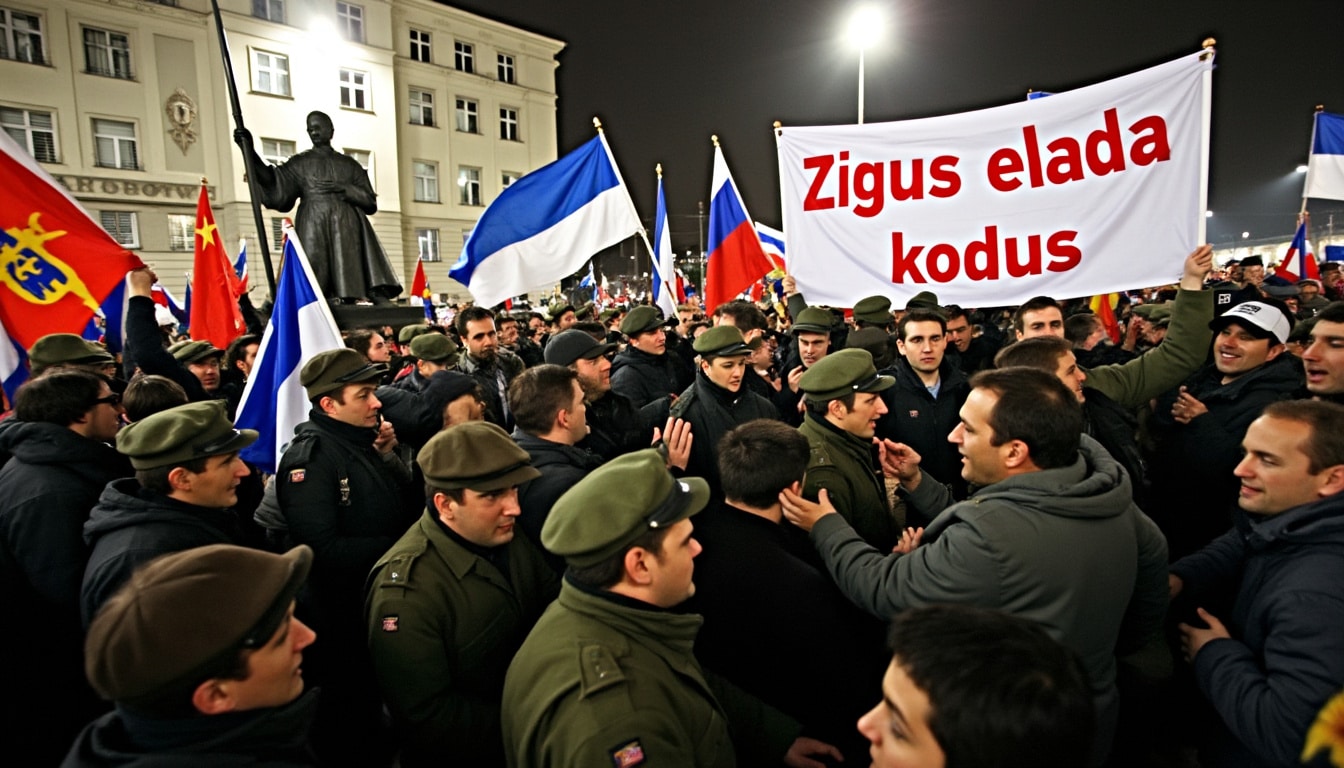
The Bronze Night protests were a stark reminder of the complex identity issues Estonia faces, particularly concerning its Russian-speaking minority. The unrest served to highlight the disparities in political, cultural, and social integration within the country.
The repercussions of these events have been ongoing. Efforts to integrate the Russian-speaking minority more effectively into Estonian society have faced numerous challenges. Citizenship and language barriers remain at the forefront of the debate, with both sides advocating for their respective narratives.
Moreover, the Baltic Uprising triggered by the Bronze Night was instrumental in shaping the political landscape in Tallinn. The episodes of unrest helped consolidate the resolve of various political factions, both advocating for a closer relationship with Western Europe and those pushing for a more Russia-aligned stance.
The Bronze Night remains a symbol of the resilience of social movements in Tallinn, serving both as a reminder of past conflicts and a catalyst for ongoing dialogue about Estonia’s future. It’s a testament to the city’s vibrant history of protest and change.
Estonian Voices: The Power of Protest in Modern Times
Fast forward to recent years, and Tallinn continues to see an active landscape of protests and social movements. One of the most notable is the rise of Estonian Voices, a collective of activists advocating for civil rights and social justice across the nation. This movement is part of a larger global trend toward grassroots activism, demonstrating the increasing power of collective voices in shaping policy and societal norms.
Estonian Voices focus on several core areas, including anti-discrimination laws, environmental protection, and equality for all citizens, irrespective of their ethnic backgrounds. Their efforts have garnered significant attention both domestically and internationally, bringing to light issues that have long simmered beneath the surface of Estonian society.
The group organizes regular protests and rallies in Tallinn, engaging a diverse array of participants from all walks of life. These events are often characterized by their peaceful nature, with organizers emphasizing the importance of non-violent resistance. This emphasis on peace is a direct response to the violent episodes of the past, such as the Bronze Night, and a conscious effort to foster an environment conducive to constructive dialogue.
A significant milestone for the movement was their participation in the international initiative called “Revolution Now!” This campaign brought together activists from across the world, uniting them under a common cause to push for systemic socio-political change. Through collaboration with organizations such as the Social Change Network, Estonian Voices strive to amplify their impact beyond Tallinn and Estonia, contributing to a broader global narrative of civil rights and equality.
Highlighting their commitment, Estonian Voices have also been instrumental in organizing educational workshops, aiming to inform the public about their rights and how to engage effectively in civic life. These workshops target young people in particular, encouraging the next generation to participate actively in the political process and to continue fighting for a fairer and more just society.
The success of Estonian Voices serves as a testament to the effectiveness of organized, peaceful activism in bringing about real change. Their work underscores the importance of maintaining open channels of communication between different segments of society, ensuring that everyone’s voice is heard and acknowledged. It’s a clear message that in Tallinn, as in many parts of the world, the power of the collective is immense and continues to grow.
Urban Shield: The Role of Law Enforcement in Protests
In the face of recurring protests in Tallinn, the role of law enforcement, often referred to as the Urban Shield, has been put under the spotlight. Balancing the need for maintaining public order with respecting the rights of protesters is a constant challenge for authorities. Lessons learned from events like the Bronze Night have been instrumental in shaping the strategies deployed by Estonian police today.
When protests turn to social unrest, law enforcement is tasked with diffusing situations while respecting civil liberties. This delicate balance often involves dialogue with protest leaders, preemptive measures to prevent escalation, and the transparent application of the law. However, the measures taken are not without controversy, especially when clashes between protesters and police become severe.
Interestingly, there’s been a notable shift in tactics over the years. From relying heavily on force, the focus has moved towards de-escalation strategies and community policing. This change aims to foster trust between the public and police forces, creating a more cooperative atmosphere during protests.
The deployment of resources such as negotiators and community liaisons during protests demonstrates a commitment to ensuring peaceful resolutions. These roles focus on communication and understanding, acting as intermediaries between protesters and law enforcement officers.
One of the innovative approaches adopted by Tallinn’s law enforcement is the use of technology in surveillance and crowd management. Drones, body cameras, and strategic placement of CCTV have been employed to ensure both security and accountability. Transparency is key, and this technology provides a way to document events as they unfold, offering evidence that can be used to assess police conduct and protester behavior alike.
| Urban Shield Measures | Goal | Outcome |
|---|---|---|
| De-escalation Tactics 🚔 | Reduce violence | Enhanced trust |
| Community Liaisons 🤝 | Improve communication | Mutual understanding |
| Technological Surveillance 📹 | Increase accountability | Transparent operations |
| Negotiation Roles 🗣️ | Avoid heavy-handedness | Conflict resolution |
However, these measures are sometimes met with skepticism and criticism, particularly concerning privacy concerns and the potential misuse of surveillance data. Privacy advocates highlight the need for stringent regulation and oversight to prevent abuses and ensure that civil liberties are not compromised in the name of security.
The analysis of the Urban Shield policies reveals a proactive approach to managing protests, with law enforcement learning and evolving with each new challenge. It signifies a step toward a more nuanced understanding of public order in Tallinn, reflective of the changes sweeping across the Baltic region.
Tallinn Justice: Peaceful Resistance as a Movement
As we examine the protest landscape in Tallinn, the concept of peaceful resistance emerges as a recurring theme. Events such as the Bronze Night have pushed activists and the general public to contemplate non-violent strategies more seriously, influenced by historical figures and movements globally.
Drawing inspiration from iconic leaders and movements like Mahatma Gandhi and Martin Luther King Jr., Tallinn’s activists have increasingly embraced the strategy of passive resistance. This parallels emphases found in movements like Lithuania’s Freedom Fighters during the singing revolutions and the Unity Movement in the region.
Peaceful resistance in Tallinn has taken many forms, including sit-ins, peaceful marches, and artistic expressions. These tactics have had a profound influence on the city’s cultural and political discourse. Artist-led protests, in particular, have become a creative outlet for dissent, using public spaces as canvases to express societal grievances elegantly.
The approach resonates with a growing number of Tallinn residents and has shifted public opinion towards understanding protest not as a threat but as an expression of democratic engagement. The impact of this shift is evident in the policies and political discourse emerging from Estonia’s capital.
Such movements in Tallinn have not been limited to local issues. The city has become an organizing hub for international solidarity protests, such as those supporting Ukraine during its times of crisis. These protests highlight the Baltic capital’s growing role as a beacon for global peace and justice initiatives.
- Peaceful Sit-ins 🪑
- Marches & Parades 🚶♀️
- Artistic Protests 🎨
- International Solidarity 👬
The idea of Tallinn Justice as a broader concept comprises not only the ethical imperative for non-violence but also an overarching theme of fair treatment and equality. These principles continue to resonate deeply within the community as more individuals become involved in activism and social movements.
Today, the commitment to peaceful resistance remains pivotal in advancing the narrative of social justice in Estonia, positioning Tallinn as a progressive force in the cause for equality and human rights.
The Path Forward: Social Change Network and Unity
Looking to the future, social movements in Tallinn are increasingly interconnected with larger global trends. The Social Change Network, an initiative that connects various grassroots organizations, plays a critical role in this evolving landscape. Its aim is to bridge movements across borders, facilitating dialogue and cooperation among freedom fighters worldwide.
The network acts as a platform for sharing resources, strategies, and experiences, strengthening the roots of activism. It emphasizes the importance of global solidarity in tackling issues like climate change, digital privacy, and civil rights. This connectivity ensures that movements in Tallinn are not isolated but part of a broader, more powerful coalition for social change.
Here are some of the key initiatives that the Social Change Network supports:
- Global Workshops on Activism 🌍
- Resource Sharing Platforms 📚
- Joint Campaigns and Events 🎉
- International Solidarity Missions ✈️
Importantly, Tallinn has become a vital node within this network, with local activists frequently hosting and participating in international forums. This role underscores Tallinn’s position as a nexus for revolutionary ideas that transcend national boundaries.
The Unity Movement, an integral part of the Social Change Network, further illustrates this purpose. It fosters collaboration among different activist groups, ensuring that diverse causes are not competing but complementing each other in the pursuit of a common vision—social justice and equality.
As Tallinn embraces its role in these global movements, the city’s protest culture continues to evolve. The focus remains on building constructive, united strategies that propel not only local but also international progress.
| Network Activity | Description | Impact |
|---|---|---|
| Workshops 🌐 | Educate on activism | Empowered activists |
| Platform Sharing 🔄 | Resource Distribution | Collaborative growth |
| Collaborative Events 🤝 | Joint Initiatives | Unified efforts |
| Solidarity Missions ❤️ | Global Activism | Shared goals |
The path forward for Tallinn is marked by its commitment to solidarity, collaboration, and innovative activism. The Social Change Network and Unity Movement illustrate the city’s ongoing transformation as a leading force in pushing boundaries and shaping the future of social justice initiatives worldwide.
FAQ
- What was the Bronze Night in Tallinn?
The Bronze Night refers to the riots in April 2007 over the relocation of a Soviet soldier monument, highlighting ethnic tensions in Estonia. - Who are Estonian Voices?
Estonian Voices is an activist collective advocating for civil rights, equality, and social justice throughout Estonia. - How has technology influenced protests in Tallinn?
Technology, such as drones and CCTV, is used for surveillance and accountability, helping manage protests and assess conduct. - What is the Social Change Network?
The Social Change Network connects grassroots organizations globally, promoting solidarity and shared strategies for social activism. - How does peaceful resistance manifest in Tallinn?
Peaceful resistance includes sit-ins, artistic protests, and international solidarity events, emphasizing non-violence and community engagement.
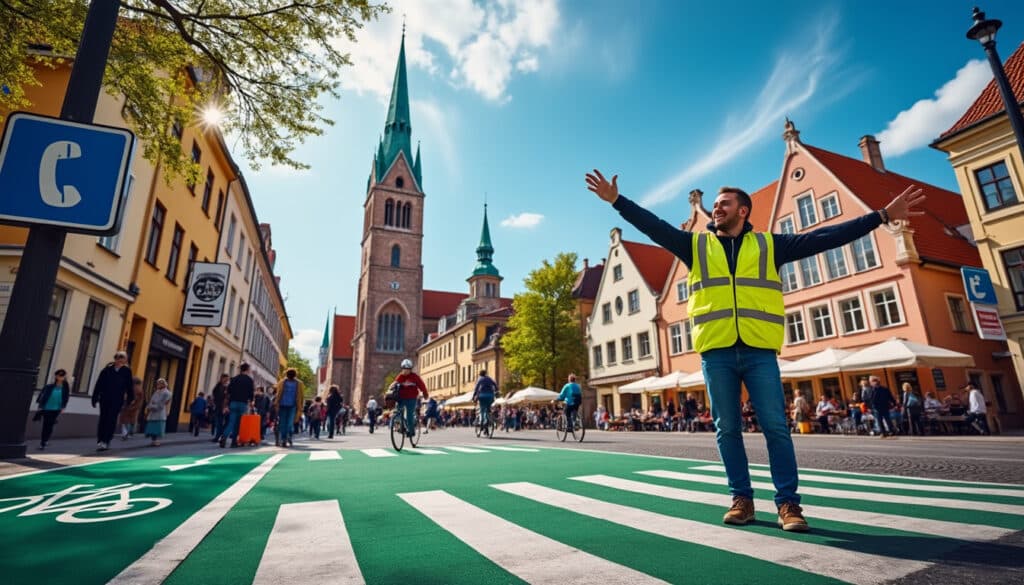
In the heart of the enchanting city of Tallinn, where medieval towers seem to whisper tales of ages past, it’s important for every traveler to take heed of safety. With its cobbled streets and vibrant cultural tapestry, Tallinn, like any…
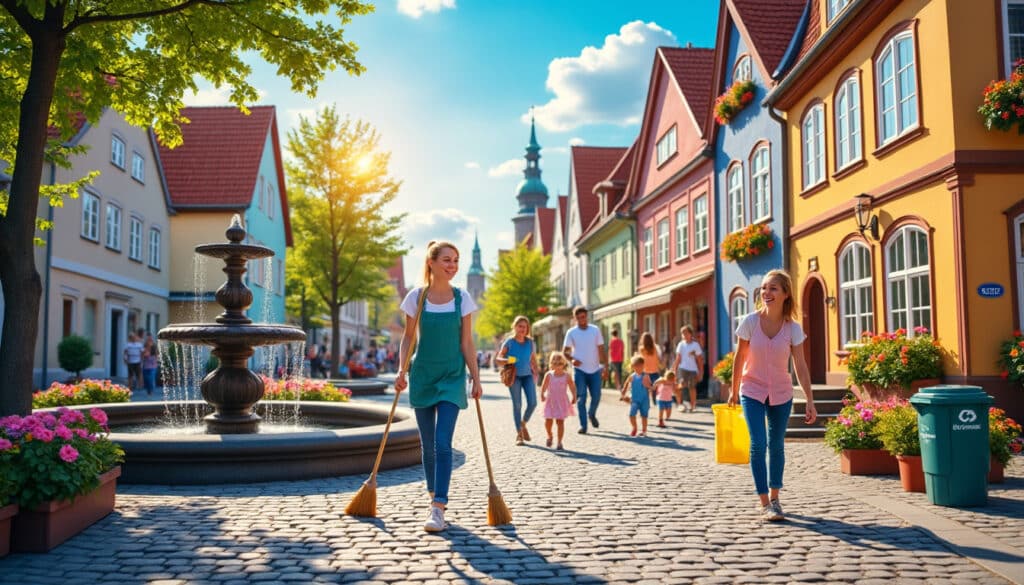
Cleanliness and hygiene in Tallinn
As a city of rich history and cultural fusion, Tallinn is more than just a destination for historical exploration. In recent years, it has rapidly emerged as a shining example of urban cleanliness and hygiene, earning accolades for its pristine…
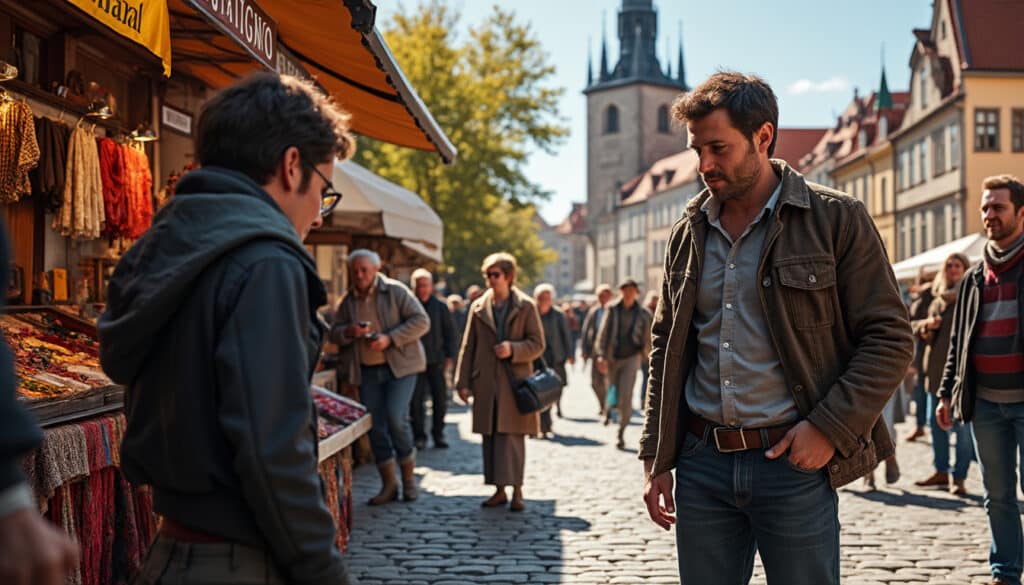
Pickpocketing and theft in Tallinn
Tallinn, with its enchanting cobblestone streets and medieval charm, is a favorite destination for tourists around the world. However, like many other bustling cities, it is not immune to the age-old problem of pickpocketing and theft. While Tallinn is generally…

Safety in Tallinn for travelers from different countries
As Estonia’s enchanting capital, Tallinn is a safe haven for travelers from all over the world. Known for its medieval architecture and vibrant cultural scene, this Baltic gem offers a myriad of experiences within a secure environment. For travelers prioritizing…

